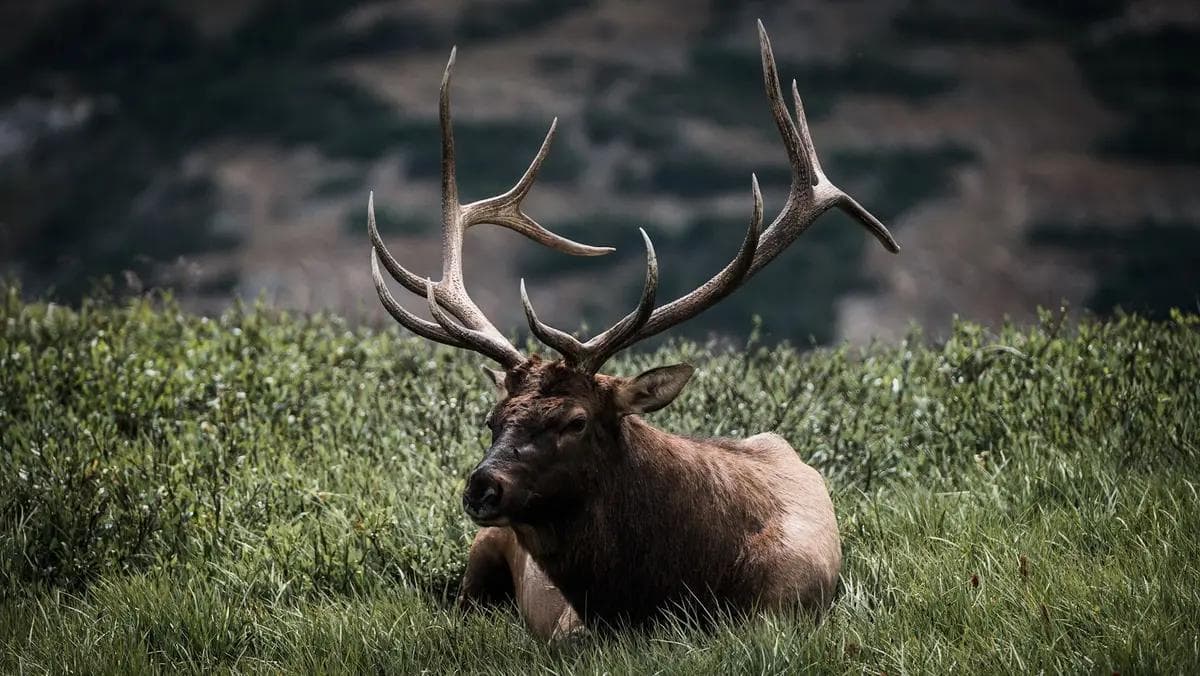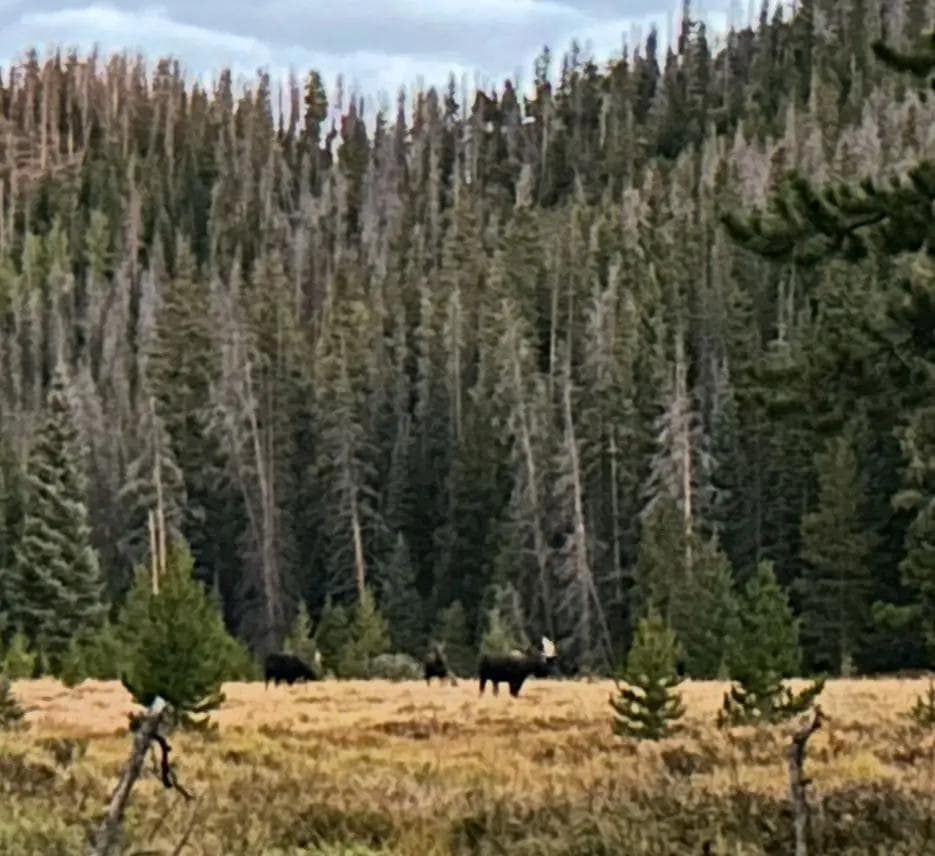Elk vs. Moose Hunting: Key Differences, Strategies, and Gear for Success


Justin Hunold
01/11/2025
There’s a moment on every western hunt when you stop, draw a breath, and realize what you’re up against. Maybe it's the deep grunt echoing through willows at first light, or the distant bugle rolling down a canyon wall. Either way, you're in it now. And whether you're chasing moose or elk, you'd better be clear on what kind of animal you’re hunting—because everything else depends on that.

Bigger Isn’t Always Harder. But It’s Always Different.
On paper, the differences between moose and elk seem simple. Moose are massive, live in wet, often miserable country, and come with a tag system that’s more like a lottery than a hunt plan. Elk are more widespread, vocal, and—at least in the West—easier to get into. But on the ground, the difference between these two animals is about more than size or statistics.
It’s about style.
When the Hunt Starts Close: Bowhunting Elk and Moose
Bowhunting Elk: The Bugle Game
There’s no thrill in the woods like hearing a bull elk scream back at your call. When I started bowhunting elk, I thought it would be about strength—covering miles, climbing mountains. But what I learned is that elk reward the hunter who can listen better than they call.
Elk are herd animals. They’re vocal. If you know how to talk to them—and more importantly, when not to—you’ve got a chance. A well-placed cow call, a subtle rake on a tree, and the patience to let the bull make the next move… that’s bowhunting elk at its best.
You’re mobile. You’re playing wind and thermals like a chessboard. And when it works, it’s electric.
Bowhunting Moose: Quiet Giants, Close Encounters
Moose don’t scream. They don’t herd up or run from calls. Instead, you find yourself in willow thickets, bug-bitten and wet, whispering cow calls into the stillness and hoping a bull glides in like a shadow. And sometimes, they do—30 yards away, silent, staring.
My Friend Shawn’s close moose encounter with a bow felt more like a surprise party than a stalk. One second, He was glassing cattails. The next, a chocolate antler was floating through the willows. He stopped broadside at 25 yards, unaware. Shawn didn't get the shot—but he got the lesson.
With moose, the work starts before the shot. Terrain. Wind. Scent. Movement. The margin for error is razor-thin.

When You Back Off and Reach Out: The Rifle Hunt
Elk with a Rifle: Range, But Not Relief
There’s a misconception that rifle hunting elk is easy. It’s not. Sure, you gain yardage. But you also lose the intimacy of the bow hunt—and you trade it for decisions under pressure. You’re still working ridgelines, glassing benches, and playing thermals, but now you’re calculating ballistics and terrain.
You’ve got a narrow window. Elk don’t stand still long. Shawn once waited twenty minutes on a bedded bull, only to watch him melt back into timber before he could get steady. That’s rifle elk hunting. The opportunity is bigger—but so is the responsibility to wait for the right shot.
Moose with a Rifle: Weight and Wet Work
With moose, a rifle can feel like an equalizer. You may not get many chances, but a solid, ethical shot at 150–200 yards can turn years of planning into a five-second finish.
But that’s when the real work begins. You’ve got a 1,200-pound animal on the ground in terrain you can’t drive into. You start quartering where it fell, sweating through layers, running meat bags to a dry patch one at a time. It’s not romantic—it’s brutal. And it’s what makes moose so unforgettable.
Gear That Gets It Done: From Cartridges to Canvas
Rifle Talk: Power, Precision, and the Right Fit
Let’s start with the rifle—because whether you’re chasing elk at 400 yards across a canyon or trying to anchor a moose in the timber, your shot placement and cartridge choice will define the success and ethics of the hunt.
The .30-06 Springfield is where most hunters begin, and for good reason. It's versatile, widely available, and capable of taking down both elk and moose with proper bullet selection and shot placement. Pair it with a 180-grain bonded bullet, and it’ll punch clean through both animals at reasonable ranges.
Step it up a notch and you’ve got the .300 Winchester Magnum. It’s arguably the most popular elk and moose cartridge for good reason—flat-shooting, hard-hitting, and proven from Alaska to Arizona. It gives you the confidence to stretch shots if needed, without punishing your shoulder the way some of the ultra-mags will.
For hunters venturing into true backcountry or anticipating shots past 400 yards, 7mm Remington Magnum offers a great balance of velocity, manageable recoil, and downrange accuracy. It bucks wind well and carries enough energy to take down big-bodied bulls with authority.
And then there’s the top shelf: .338 Win Mag, .375 H&H, and even .416 Ruger for those chasing the biggest bulls in the deepest places. These are specialized tools—brutal on recoil but unbeatable in terminal performance. If you’re planning an Alaskan moose hunt, this is the realm you’re in.
The takeaway: Bring the most rifle you can shoot confidently. Know your drop. Know your load. Know your limit.
Optics: Don’t Glass Cheap
Both elk and moose thrive at dawn and dusk, so low-light performance matters more than magnification. Invest in quality 10x42 binoculars with top-end glass—something that’ll let you pick antlers out of brush in gray light or track movement across a basin at last light.
For rifle optics, a 3-15x or 4-16x scope with a zero-stop turret and generous eye relief hits the sweet spot. Illumination is a bonus, but durability and tracking matter most. You’re going to bump it. Trust your gear.
Add a lightweight spotting scope if you’re glassing multiple ridgelines or sizing bulls before burning calories to stalk.
Packs and Load-Out Systems
A good pack isn't a luxury—it's life support. When you kill an elk or moose, that’s just the beginning of the work. You need a frame pack that can handle 80+ pounds repeatedly, with a comfortable harness system that distributes weight through your hips.
Look for:
- Removable meat shelf or expandable rear panel
- Waterproof compartments or dry-bag integration
- Easy-access outer pockets for knives, headlamp, snacks, and inReach or phone
Don’t cheap out. You’ll curse every step under load with a bad pack.
Clothing: Layered, Quiet, and Built for Abuse
Base layers: Moisture-wicking merino wool is king. Elk hunts will have you sweating up ridges. Moose hunts will soak you in dew or rain. Either way, wet = cold if you’re not layering smart.
Mid-layers: Grid fleece or synthetic puffy layers add insulation without bulk. Prioritize breathability and packability.
Shells: You want a quiet, waterproof outer layer that doesn’t crinkle or shine. GORE-TEX, Sitka’s Windstopper, or other high-end membranes earn their keep when the wind howls or rain starts sideways.
Gloves and hats: Bring multiple pairs. I’ve dropped gloves mid-pack-out more times than I can count. A warm beanie, a billed cap, and a neck gaiter round out your headgear.
Footwear: The Hunt Starts at the Sole
For elk: A lightweight, high-ankle boot with aggressive tread is key. You'll be sidehilling, climbing, and descending. Breathability matters as much as support.
For moose: Waterproof boots with a taller profile are ideal. In many moose habitats, you’re walking through swamps, marsh, or wet lowlands. Some hunters even carry hip waders or knee-high rubber boots to stay dry in bog country.
Break boots in. Don’t test them on day one of the hunt.
Field Tools and Extras
- Game bags: Heavy-duty, breathable bags like Caribou Gear or TAG Bags. For moose, bring more than you think you need.
- Bone saw or hatchet: Moose bones are no joke. You’ll need real tools to split the pelvis or rib cage.
- Insect protection: For moose especially, a head net and strong DEET-based spray can save your sanity.
- Navigation tools: Don’t rely on cell signal. Pre-load your hunt areas into an offline GPS app (like OnX or GOHUNT Maps) and carry a compass and paper map backup.
- Trekking poles: Useful for both packing meat and crossing streams. Your knees will thank you.
Tagging Reality: Accessible Elk, Aspirational Moose
If you’re hunting elk in the West, you’ve got options. OTC tags, cow seasons, generous ranges. It’s a hunt you can build into a budget and a schedule. You still have to work for it, but the access is there.
Moose? That’s different. You don’t plan a moose hunt for this year. You plan it for some year. Whether it’s Shiras in the Rockies or Eastern moose up north, you’re often entering a draw you may not win for a decade. When it hits, you clear your calendar.
One is a journey you can repeat. The other is a pilgrimage.

Which Hunt Should You Take?
If you want a calling game, a rugged hike, and a fair chance to do it again next fall—go elk. If you want to test your patience, logistics, and back strength with a once-in-a-lifetime hunt—chase moose.
Just know this: both animals will teach you something. About silence. About range. About work. And about what kind of hunter you are when things get real.